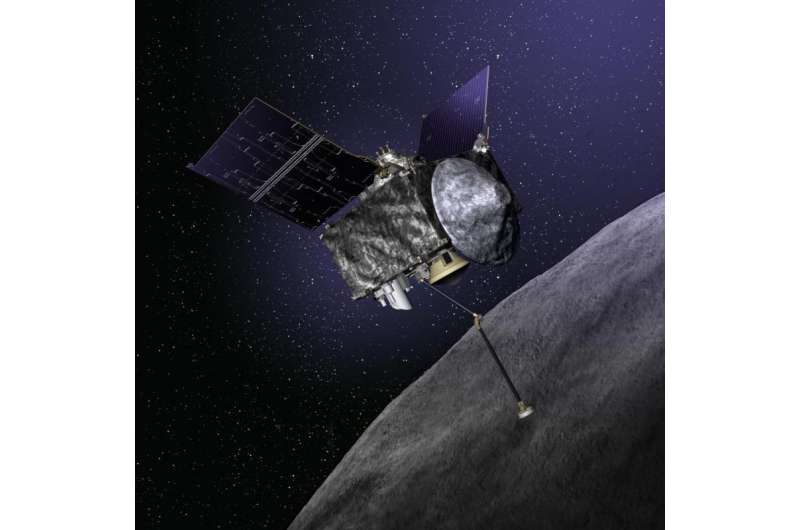To Bennu and back

NASA is launching a spacecraft to visit an asteroid… and return to tell the tale.
OSIRIS-REx is scheduled to blast off from Cape Canaveral on September 8, 2016, on a mission to orbit, map and collect samples from the asteroid Bennu, and return to Earth 7 years later.
Discovered in 1999 by the NASA-funded LINEAR asteroid survey, Bennu measures about 1650 feet across and weighs over 60 million tons. Imagine a boulder the height of the Empire State Building—that's about the size of Bennu.
So, why Bennu? Because the asteroid is interesting due to its size and composition, and it is accessible to be sampled.
Bennu is a primitive and carbon-rich asteroid. Primitive asteroids contain material that has not changed significantly since they formed over 4.5 billion years ago. The analysis of any organic material found on Bennu will give scientists an inventory of the materials present at the beginning of the solar system that may have had a role in the origin of life on earth, and potentially elsewhere.
Indeed, Dante Lauretta of the University of Arizona, Principal Investigator on the OSIRIS-REx mission says mapping and sampling the space rock "can potentially hold answers to the most fundamental questions human beings ask, like 'Where do we come from?'"
To get to Bennu, OSIRIS-REx will perform a series of deep space maneuvers, first orbiting the sun for a year and then using Earth's gravity to be slung towards Bennu.
The spacecraft will spend a year flying in close proximity to Bennu – its five instruments imaging the asteroid, documenting its lumpy shape, and surveying its chemical and physical properties.
In July 2020, OSIRIS-REx will approach Bennu and execute its touch-and-go – or TAG – maneuver. A mechanical arm that functions like a combination sample scoop and pogo stick will be extended from the spacecraft. The spacecraft will slowly approach the asteroid until the sample head at the end of the arm gives a gentle "high five" to the surface. The maneuver may be executed up to three times, and OSIRIS-REx could leave Bennu with up to 4.4 pounds of sample material from the asteroid.
Researchers will be keen to learn about Bennu for another reason, too. Bennu orbits the sun between Venus and Mars so it crosses Earth's orbit frequently and comes close to Earth every six years. In 2135, Bennu will make an especially close approach to Earth, just within the Moon's orbit. This will change Bennu's orbit, and it is more difficult to predict how much closer it may come to the Earth after that close encounter. Lauretta says, "We need to learn as much as about Bennu as we can."
Predicting a small asteroid like Bennu's exact course is somewhat tricky, due to the Yarkovsky effect. The dark asteroid absorbs sunlight and then gives it off as heat, which serves as a gentle thruster that gradually shifts its path.
Edward Beshore of the University of Arizona, Deputy Principal Investigator for OSIRIS-REx says, "We'll get accurate measurements of the Yarkovsky effect on Bennu by precisely tracking OSIRIS-REx as it orbits the asteroid."
If all goes as planned, OSIRIS-REx will fire its main engines in March 2021 and begin its journey back to Earth. The samples will arrive in September 2023, when a capsule containing bits of Bennu will land at the Utah Test and Training Range. From there, the capsule and its precious contents will travel to NASA's Johnson Space Center in Houston, TX, where hands-on analysis of this ancient asteroid will begin by mission scientists and then by scientists from all over the world.
More information: For updates on the mission to Bennu and back, go to www.asteroidmission.org
Provided by NASA





















